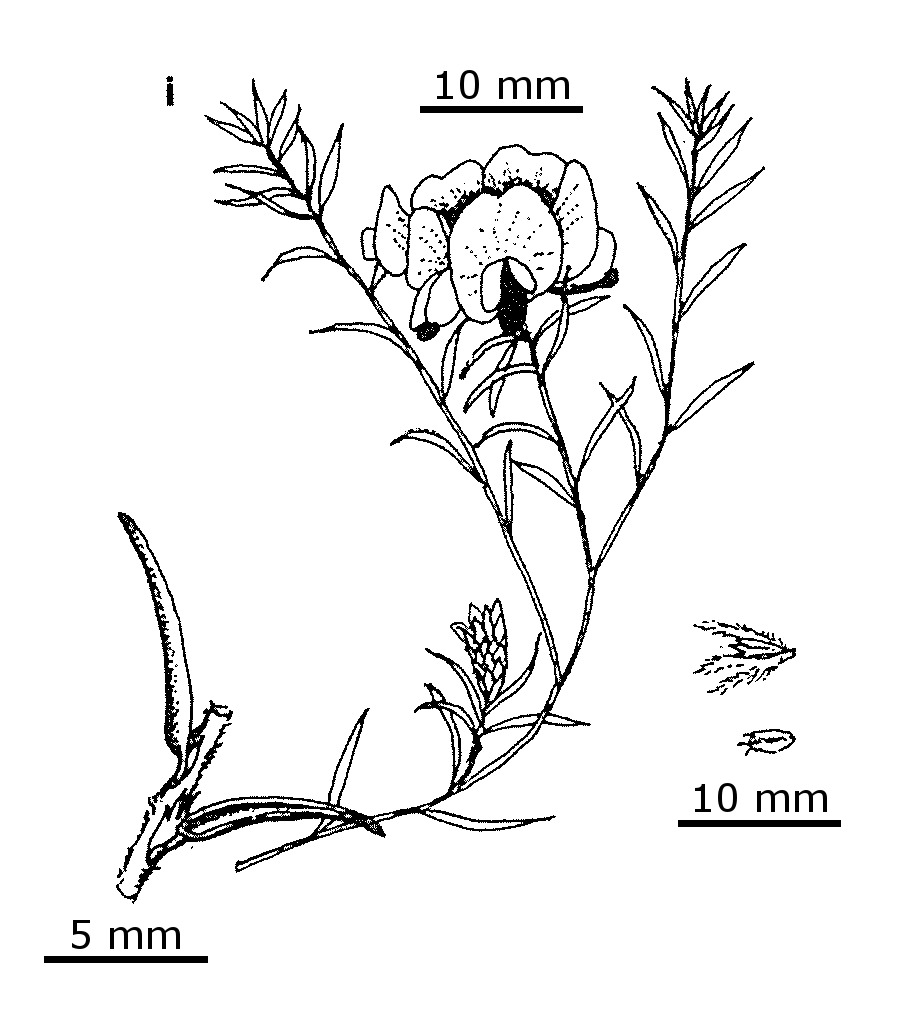Pultenaea dentata
Labill. Clustered Bush-peaLax, open, prostrate, procumbent to erect shrub, to 80 cm high; stems terete, finely ribbed, with pale, appressed hairs when young. Leaves alternate, oblanceolate or elliptic, 5–12 mm long, 0.5–2 mm wide; apex acute; upper surface glabrous, paler than lower; lower surface glabrous or glabrescent, occasionally slightly wrinkled or scabrous; margin incurved; stipules triangular or lanceolate, 1–2 mm long; Inflorescence terminal, head-like, with more than 6 flowers; bracts persistent, ovate, 2–3 mm long, dark brown with pale appressed hairs at base, apex ciliate, torn, occasionally 3-lobed; calyx 5–6 mm long, covered with pale silky hairs, lobes tapered to long, slender points; bracteoles attached at base of calyx tube, 3-lobed, 2–2.5 mm long, centre lobe hairy, outer lobes glabrous, papery, or rarely, near centre; standard 4–7 mm wide; ovary and base of style covered with pale hairs. Pod ovate, sparsely hairy, exserted from calyx. Flowers Oct.–Dec.
Wim, GleP, GipP, OtP, WaP, CVU, GGr, DunT, EGL, EGU, WPro, HSF, HNF, OtR, Strz, MonT. Also SA, NSW, Tas. Widespread but scattered in southern areas in damp heathland or along streams and drains, but seldom forming large colonies. Rare north of the Great Dividing Range.
Specimens from Grampians and Wannon areas have unusually large flowers with bracteoles attached near the centre of the calyx tube.
Corrick, M.G. (1996). Pultenaea. In: Walsh, N.G.; Entwisle, T.J., Flora of Victoria Vol. 3, Dicotyledons Winteraceae to Myrtaceae, pp. 765–793. Inkata Press, Melbourne.
 Spinning
Spinning

